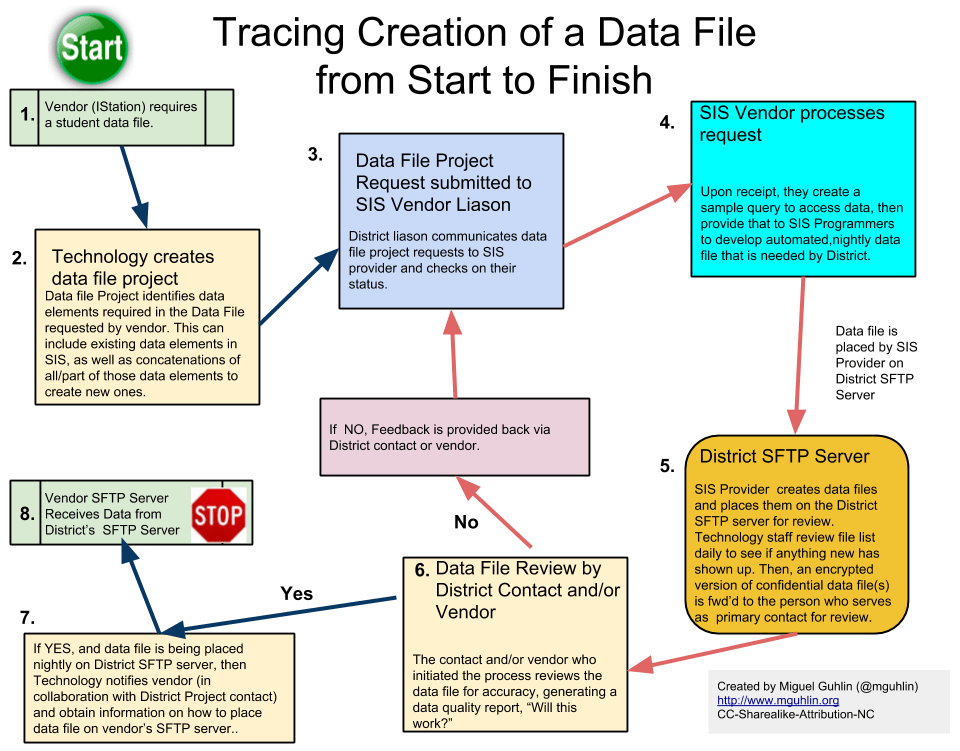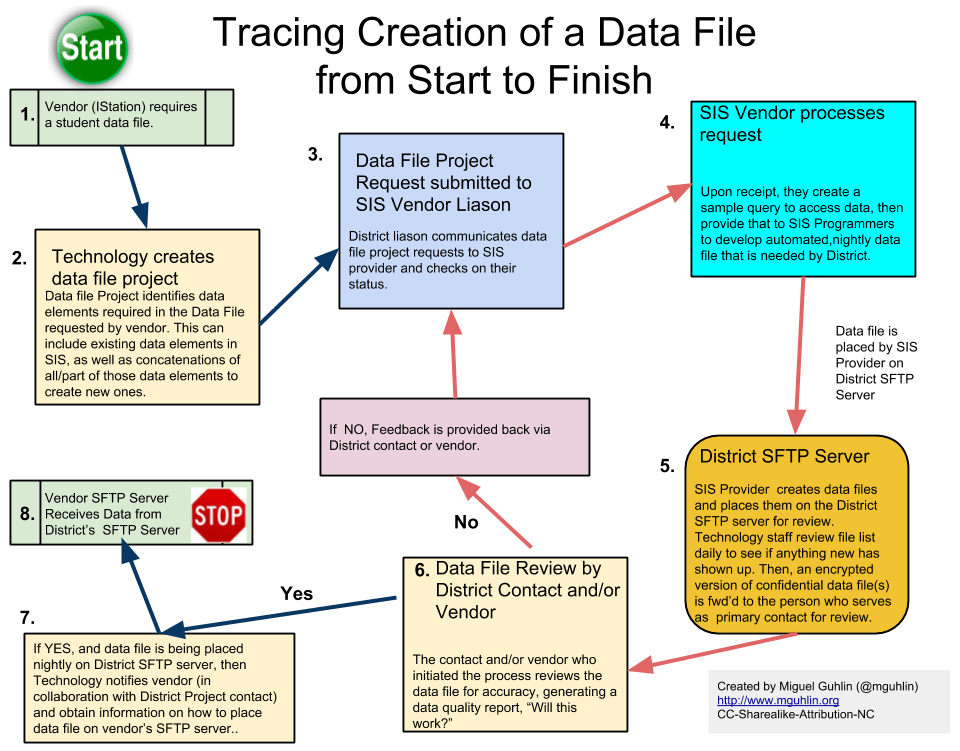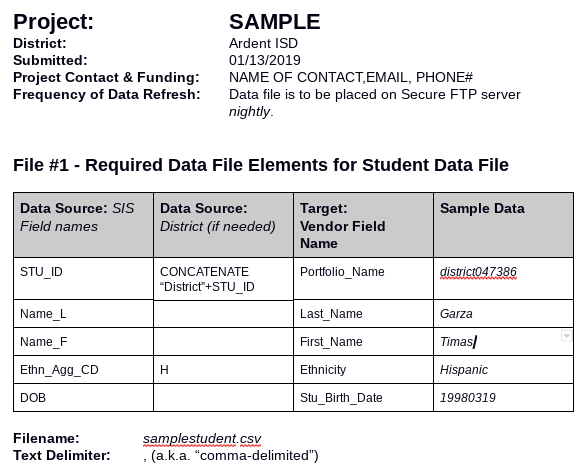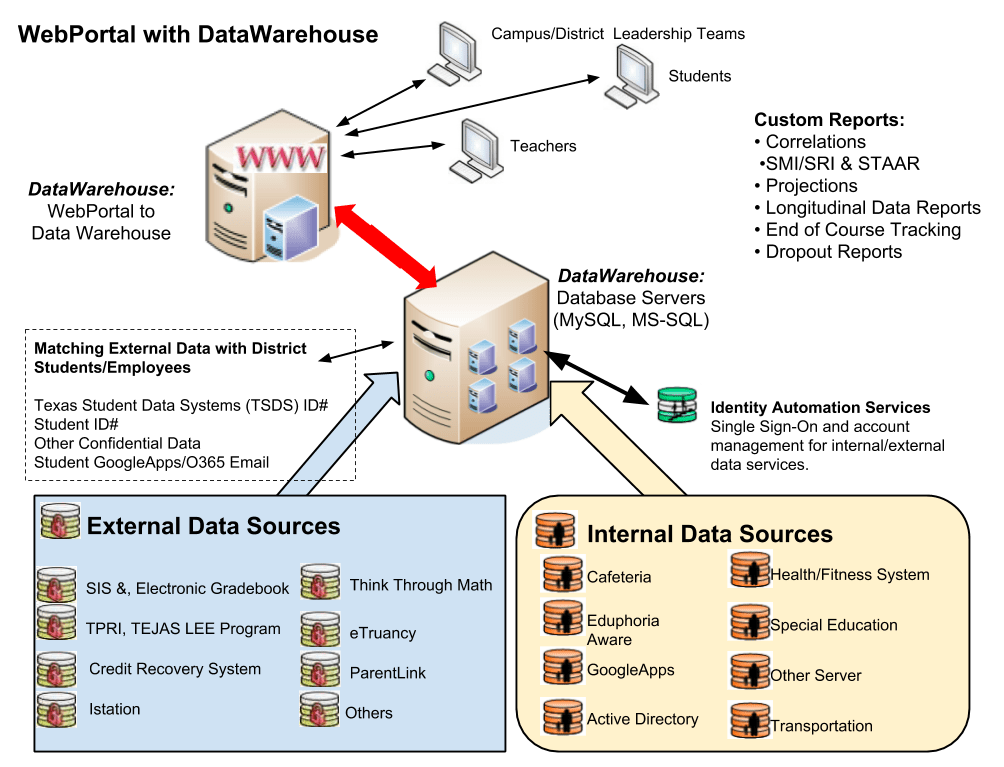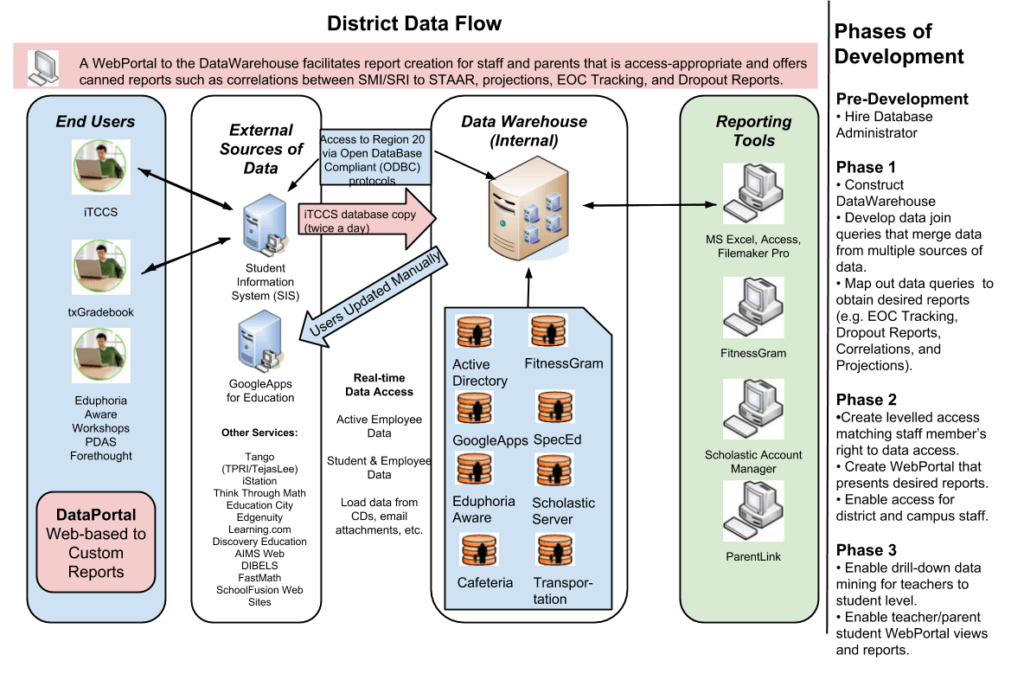Seeking a data solution that works for your district team can be difficult, no matter the size of your district. In previous blog entries, we’ve discussed various aspects of this process. Let’s take a quick look at the challenges districts face.
A Clear and Urgent Need
School districts have a clear and urgent need for a comprehensive data solution. In his article for ASCD’s Educational Leadership, veteran technology director Doug Johnson writes:
Schools are awash in data. Everything from 3rd grade reading test scores to payroll data to an inventory of each iPad purchased with Title I dollars is now stored in databases somewhere in your district.
Demographic data; attendance data; academic data (including an increasing number of test scores); and even teacher performance data are proliferating. Finance systems, transportation databases, helpdesks, and application and credentialing systems used by human resources departments are among the managerial databases used in most districts. To get an idea of some of the different data systems a typical school district may use to gather, store, and view information on students, see the sample flowchart (source: Power Up! Navigating the Seas of Data, ASCD’s Educational Leadership).
School districts often seek a data solution that meets various criteria. Those criteria include:
- Easy to access solution that district/campus staff can interface with
- Tiered levels of access to student data
- Data that is accessible, filtered, and disaggregated
- Improves strategic decision-making
- Saves time and money
Let’s dig in a bit more.
Why You May Need a Data Warehouse
School districts collect a wide variety of data. As Doug Johnson points out above, your district may have plenty of unusable data. Collected with positive intent, the data is seldom used to analyze student needs. Quality of instruction based on the use of data to form strategic plans or policy goes unanalyzed. What’s more, the data can often resides in scattered, antiquated infrastructure. This means multiple source systems exist in data silos that are inaccessible and not useful or available when needed.
Worse, district gatekeepers lock up the data and only provide the data via requests from key personnel. These key personnel may not be the people who need the data most. Worse, the timing of the requests can delay access for the people who need the data to make quick decisions.
Finding a solution that addresses these concerns can be tough. Here are some steps you can follow.
Three Steps to Dynamic Empowerment
Ready to empower your organization to change? It can be a bit of a daunting process. Let’s explore three steps that can make change possible.
Step 1 – Identify your current practices and what to change
In this step, you need to meet with stakeholders. The grittier your appreciation and grasp of the problem, the better. This step has three slow things you can do. They are slow steps because you will want to spend time on these. Don’t rush the insights that will flow from them. You will have to assist stakeholders in the field uncover the uncomfortable problem.
Here are the three slow steps:
- Discuss current needs and challenges. For a data solution, this can often involve identifying wasted time. Time, data aggregation errors, and tracking interventions are some of the problems encountered.
- Gain insight. Do this with in-depth interviews with staff in classrooms, campuses, and departments. What insights can you glean from the data problems they are trying to solve?
- Listen, listen, listen. Be sure to practice reflective listening, taking notes as stakeholders share their insights. Look for patterns in the stories they tell. Patterns about data problems can provide you with what you need to develop a solution. These solutions must adapt to the specific needs of stakeholders. Get the details on what those needs are.
One powerful way to capture these insights involves video recording. You won’t need to record everyone. That said, don’t forget to analyze current processes. Meet with staff at all levels, documenting the processes they use. Process diagrams are a great way to help identify improvement opportunities. Hunt inefficient or ineffective approaches down.
Here is an example of an ineffective approach in my previous school district. Counselors were not entering codes for a particular course. This meant that sorting students in the data solution did not work as well as it could. A quick training helped the counselors understand what they needed to do.
Other ineffective approaches can be more difficult to resolve. They may involve working with vendor partners, getting them to adjust their processes. Are there any points of failure in how data flows? Make sure to identify source systems and corresponding data.
Step 2 – Make data analysis easy, effective, and insightful
Finding the right solution partner can be daunting. These types of solutions are difficult to build in-house and can cost districts hundreds of thousands of dollars. Worse, many school district personnel may not know how to parse data for import/export. What your district needs is a data solution that serves as a repository. Even with all the data in one place, a data analytics portal may be missing.
“We are thrilled with the way data from our disparate source systems comes together in one place. The dashboards, scorecards and watch lists provide insights into student performance that otherwise would take much longer to realize or run the risk of going unnoticed. These visualizations accelerate our teachers’ and leaders’ ability to make data-driven decisions that help our students succeed.” (source: Jonathan Hulbert, East Central ISD as cited in Press Release by Certica and K-12 Dynamics)
“A data analytics portal provides insights into your school district data,” says Traci Clarke. “It assists in supporting decisions and alignment of strategies with organizational goals.” In our conversations, she mentioned that a data analytics portal needs to do at least four things:
- Integrate data from many source systems
- Ease strategic planning and monitoring of key performance indicators
- Make it easier to identify trends in district, teacher, and student performance
- Serve as a single solution with district-wide, role-based dynamic reporting
It’s important to find a data solution provider that has several major components. Let’s explore those.
Data Solution Elements
Key elements to a data solution include the following:
- Integrated data warehouse with dashboards, scorecards, watchlists, key performance indicators, and more
- Reporting with advanced analytics and disaggregation
- Role-based access and privacy controls
- Flexible enough to enable adding any data source, both old and new
- Scaleable enough to grow with the district
- Hosted, compatible with newer technologies, and mobile
This type of solution should work with data from several tiers of information. For example, consider these tiers of compatibility, listed in order of priority:
Tier 1: Student and Staff
- Student Information System (SIS) including enrollment, class schedules, attendance, discipline, and Adequate Yearly Progress (AYP)
- Classroom, state, and district assessments
- Digital gradebook
- CollegeBoard (e.g. SAT, ACT)
Tier 2: Enterprise Resource Planning
- Finance, human resources, and payroll
- Time keeping, staff development tracking, and health management
- Inventory control
Tier 3_: Transportation and Food Services
- Bus routes
- Food services (e.g. student/employee meals)
(Adapted from source: Conference Presentation by Miguel Guhlin, Traci Clarke, K-12 Dynamics, and Virgil Kirk)
Step 3 – Build partnerships
Finding the right data solution provider is an adventure all its own. My recommendation for finding one? Shop around. Ask other school districts what they are using for a data warehouse. You can easily do this by joining TEC-SIG and posting your question to hundreds of other tech directors in the TCEA Community. At worst, you will get a list of possible solution providers. At best, you may find a well-priced solution. Another suggestion involves checking out conventions like TASBO and TASA. These conventions cater to enterprise resource planning (ERP) staff in school districts. In fact, that’s where my assistant superintendent first met K-12 Dynamics’ Traci Clarke. My district formed a partnership with K-12 Dynamics that took time to form.
In the end, building a strong partnership with one company paid dividends for my district. The journey was long, hard, and requires constant maintenance. Without a strong commitment, your effort to seek and install a data solution that works will fail.


